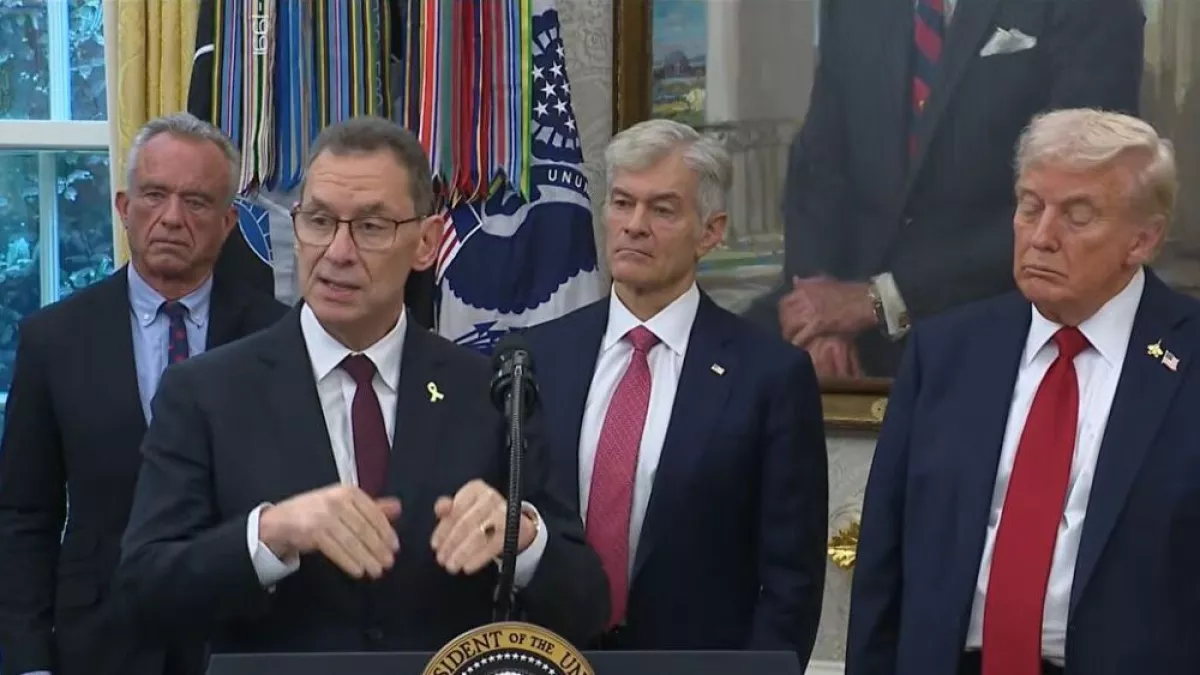Understanding why Europe could see higher medication prices following Trump's deal with Pfizer
A new agreement between US President Donald Trump and pharmaceutical giant Pfizer aimed at reducing prescription drug costs in the United States may result in higher prices abroad, particularly in European markets.
The White House announced on September 30 that the deal would allow certain US patients to purchase medications at discounted rates through a new federally operated website called TrumpRx.
Following the announcement in the Oval office, where Trump was joined by his health team, including Health Secretary Robert F. Kennedy Jr. and the Administrator of the Centers for Medicare & Medicaid Services, Turkish-American Mehmet Oz (widely known across the US simply as Dr.Oz) was revealed that the initiative will cut prices for some drugs by as much as 85% on the direct-to-consumer platform, as reported by the Financial Times.
This move comes in the wake of the Trump administration’s May executive order designed to bring US drug prices closer in line with those in other developed nations, a benchmark referred to by Washington as the "most-favoured-nation (MFN) price."

Most developed countries pay significantly less for brand-name prescription drugs than the US because national health systems regulate prices, while a report by the NPR points out, that the US, in contrast, largely leaves pricing to the market, allowing pharmaceutical companies to charge what consumers will pay.
"The American consumers have been subsidizing research and development [R&D] for the entire planet," Trump said at the press conference, where he was joined by his health team and Greek-American businessman Albert Bourla who serves as Pfizer's CEO. "They put all of that on us, and yet they were the beneficiaries too. So it's been changed," he added, noting that companies often set high prices on new drugs to recoup upfront R&D costs.
Knock-on effect for other developed nations
Data released by the White House alongside the announcement indicated that brand-name drug prices in the US are over three times higher than in other OECD countries, "even after accounting for discounts manufacturers provide in the US." The statement also highlighted research showing that about 75% of global pharmaceutical profits come from American patients, despite the US representing only 5% of the world’s population.
To offset the lower US prices for Pfizer and other pharmaceutical firms, the administration said it is negotiating with G7 nations, Switzerland, and the Netherlands to secure higher drug prices abroad, according to the Financial Times. A White House official stated that the US trade representative and the commerce department are addressing “unfair discriminatory practices to suppress drug prices,” adding, “We will see increases for prices of drugs overseas.”
Pfizer has agreed to repatriate a portion of the additional revenue earned abroad back to the US to benefit American patients, the White House confirmed. Other companies, such as Bristol Myers Squibb, have similarly announced that they are introducing new drugs overseas at elevated prices.
The Pfizer deal follows just a week after Trump announced a 100% import tariff on branded and patented drug imports, set to take effect on October 1, as part of the administration’s broader strategy to drive down medication costs. Earlier this summer, his administration reached out to 17 major pharmaceutical companies, giving them 60 days to negotiate lower prices—a deadline that also expired on October 1.
Following the announcement, European healthcare stocks rose sharply on October 1, according to Reuters, with the sector index climbing 2.77%. Gains were seen among pharmaceutical firms including AstraZeneca, Ambu, Merck, and Sartorius.
By Nazrin Sadigova








